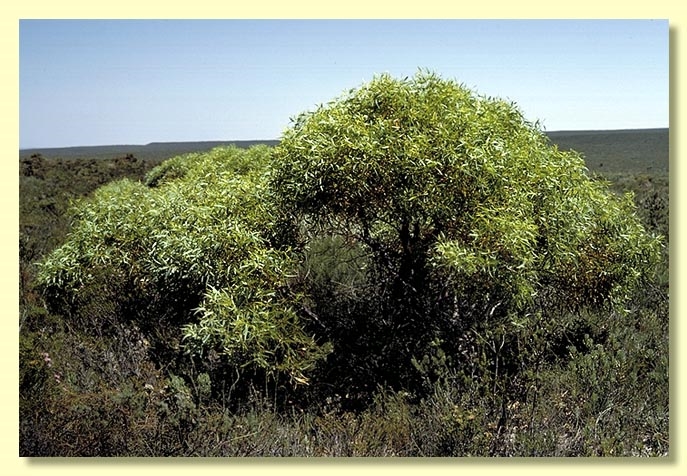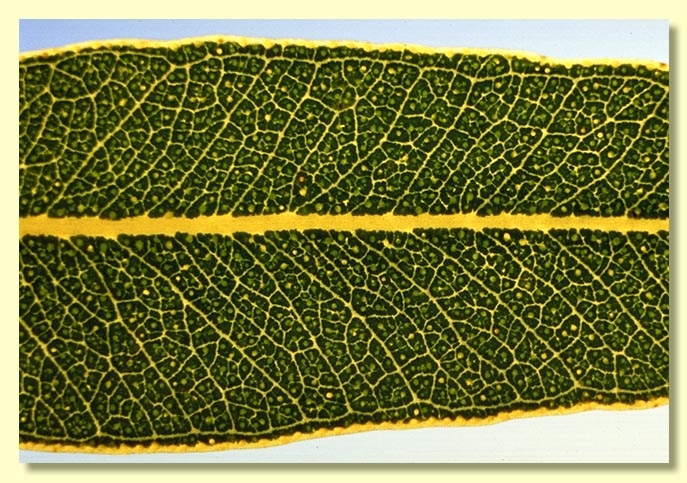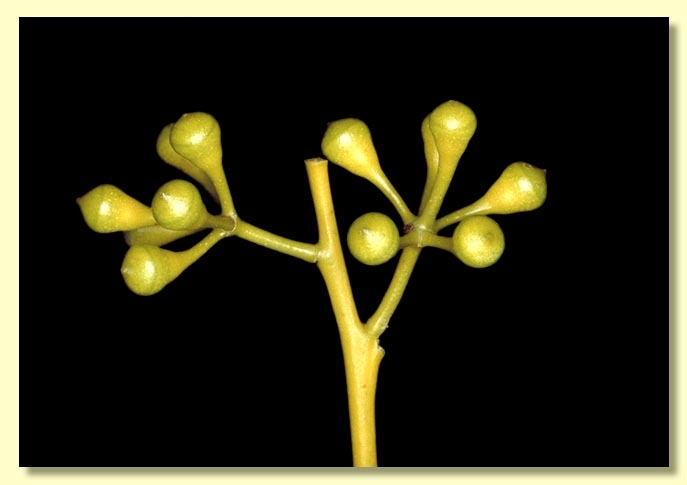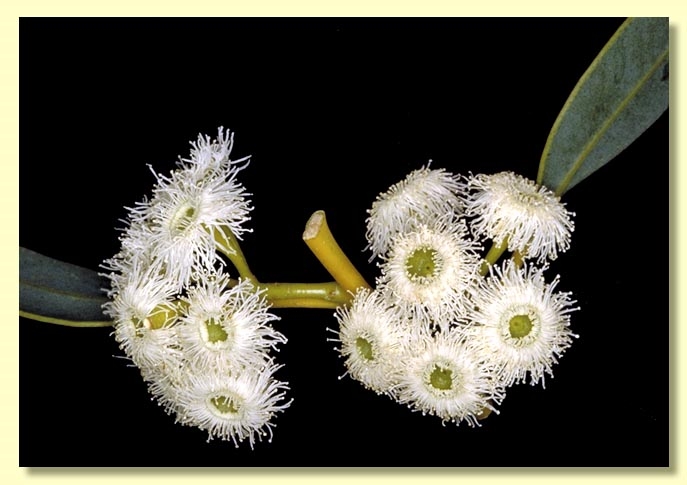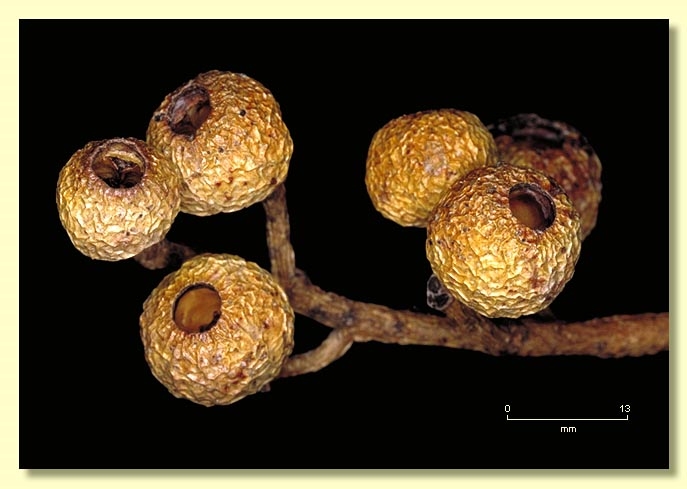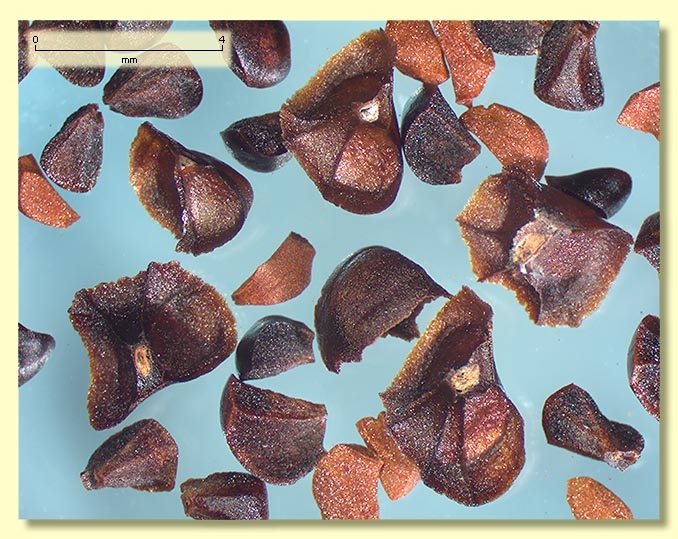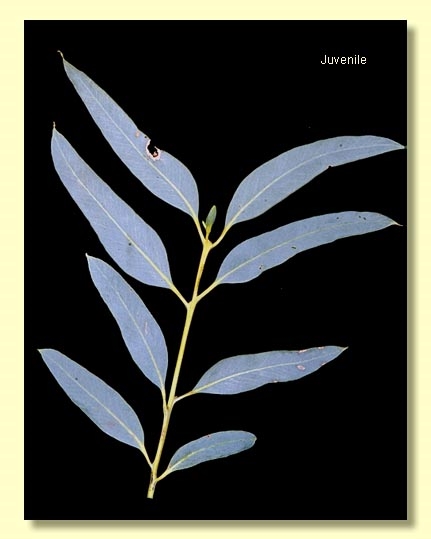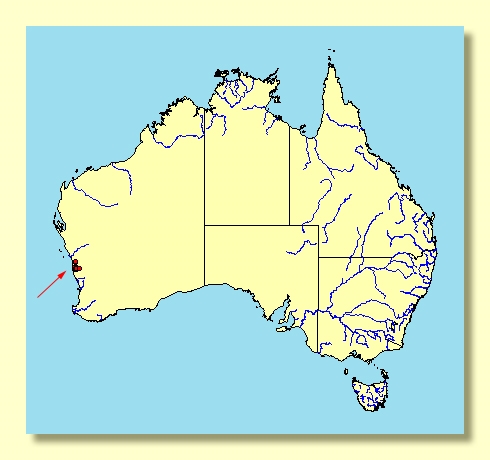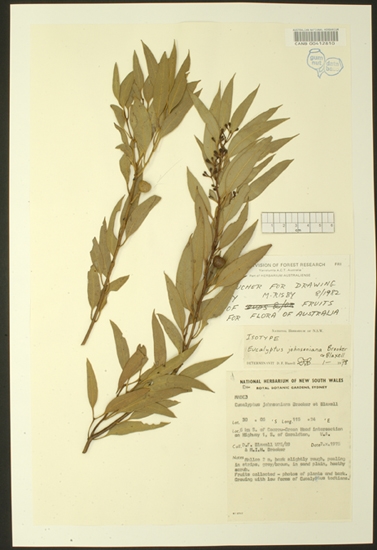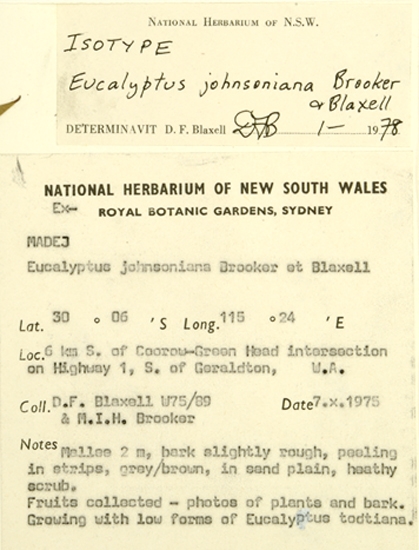Euclid - Online edition
Eucalyptus johnsoniana
Eucalyptus | Eucalyptus | Longistylus | Frutices | Diversiformae | Neuropterae
Bark rough, flaky to fibrous, grey-brown to yellow-brown, for up to 0.5 m of stems, or smooth throughout, greyish brown.
Branchlets lacking oil glands in the pith.
Juvenile growth (coppice or field seedlings to 50 cm): stems rounded in cross-section; juvenile leaves opposite for up to 10 nodes then alternate, petiolate, ovate to elliptical, 3–11 cm long, 1–3 cm wide, dull, bluish green, sometimes with a trace of wax.
Adult leaves alternate, petioles 0.5–1.5 cm long; blade lanceolate, often narrowly so, 5.5–10.5 cm long, 0.8–2 cm wide, base tapering to petiole, margin entire, apex pointed, side-veins at an acute or wider angle to midrib, reticulation moderate to dense, intramarginal vein remote from margin, oil glands both rounded and irregular in shape, mostly island.
Inflorescence axillary unbranched, peduncles 0.5–1.5 cm long, buds 7 per umbel, pedicels 0.2–0.5 cm long. Mature buds obovoid to pyriform, 0.5–0.6 cm long, 0.3–0.4 cm wide, scar absent, the single operculum rounded and sometimes apiculate, stamens inflexed, anthers oblong, versatile, dorsifixed, dehiscing by longitudinal slits that are not confluent apically, style straight, usually shorter than operculum roof in bud, stigma tapered, locules 3, the placentae each with 2 vertical rows of ovules. Flowers creamy white.
Fruit pedicellate (pedicels 0.2–0.6 cm long), truncate-globose with small orifice, 0.8–1.3 cm long, 0.9–1.6 cm wide, disc descending vertically, valves 3, enclosed.
Seeds blackish brown, 3–6 mm long, obliquely pyramidal, margin narrowly and unevenly flanged, dorsal surface curved to meet terminal hilum, ventrally ridged.
Cultivated seedlings (measured at ca node 10): cotyledons reniform; stems rounded in cross-section; leaves opposite and sessile for ca 5 nodes then becoming petiolate, remaining opposite for at least 13 or more nodes, ovate, 3.5–6 cm long, 1.7–3.3 cm wide, dull bluish green to mid-green.
Flowering has been recorded in January, October and December.
A small mallee endemic to Western Australia, occurring on white sandplain north of Perth between Badgingarra and Eneabba. The bark is rough, thin and flaky at the base of the stems. The crown is dense, often to the ground and the adult leaves are glossy, green or slightly blue-green.
Eucalyptus johnsoniana belongs in Eucalyptus subgenus Eucalyptus series Diversiformes, a group of mallee species characterised by adult leaves held more or less erect, buds with a single operculum (hence no operculum scar), cuboid-oblong anthers that shed pollen by two separate slits, ovules arranged in two rows on the placenta, pyramidal seed and seedling leaves opposite for many pairs.
E. johnsoniana is distinguished from closely related species in its area of occurrence by its flowers having a mixture of sterile stamens (staminodes) and fertile stamens, and by its globular fruit with a small orifice. The only other Western Australian species in subgenus Eucalyptus to have staminodes is E. brevistylis, a tall rough-barked forest tree from near Walpole in the far south.
Eucalyptus johnsoniana is listed as "Vulnerable" under the Australian Government Environment Protection and Biodiversity Conservation Act 1999 (EPBC Act). Further information may be found at this web address:
http://www.environment.gov.au/cgi-bin/sprat/public/sprat.pl

